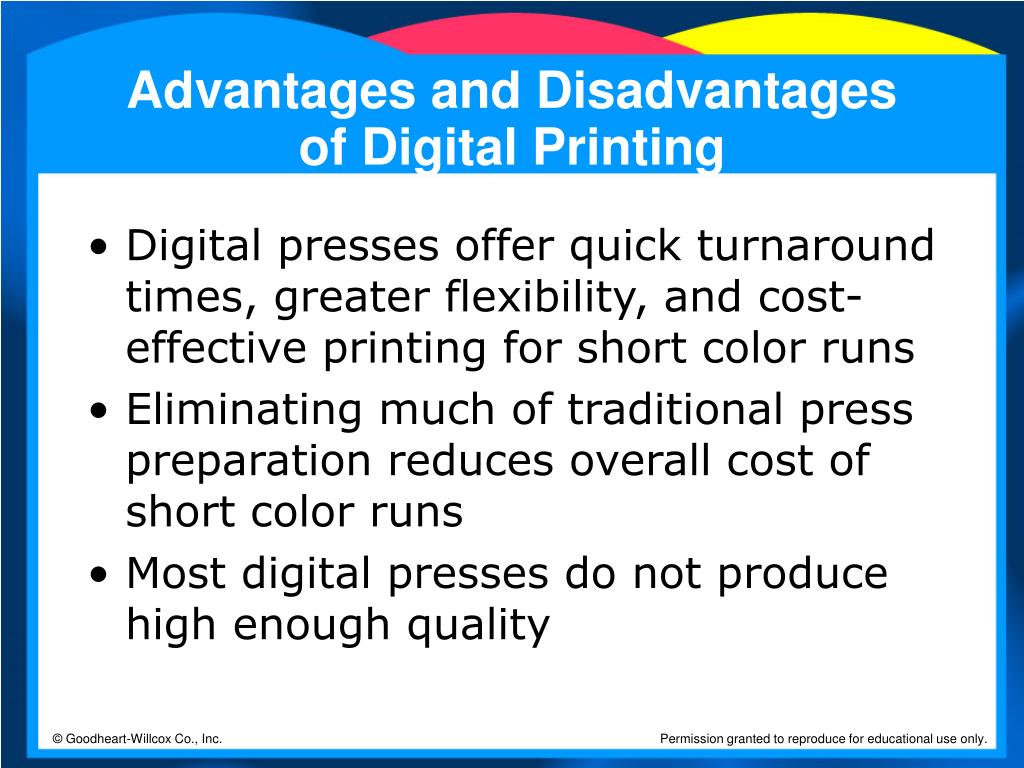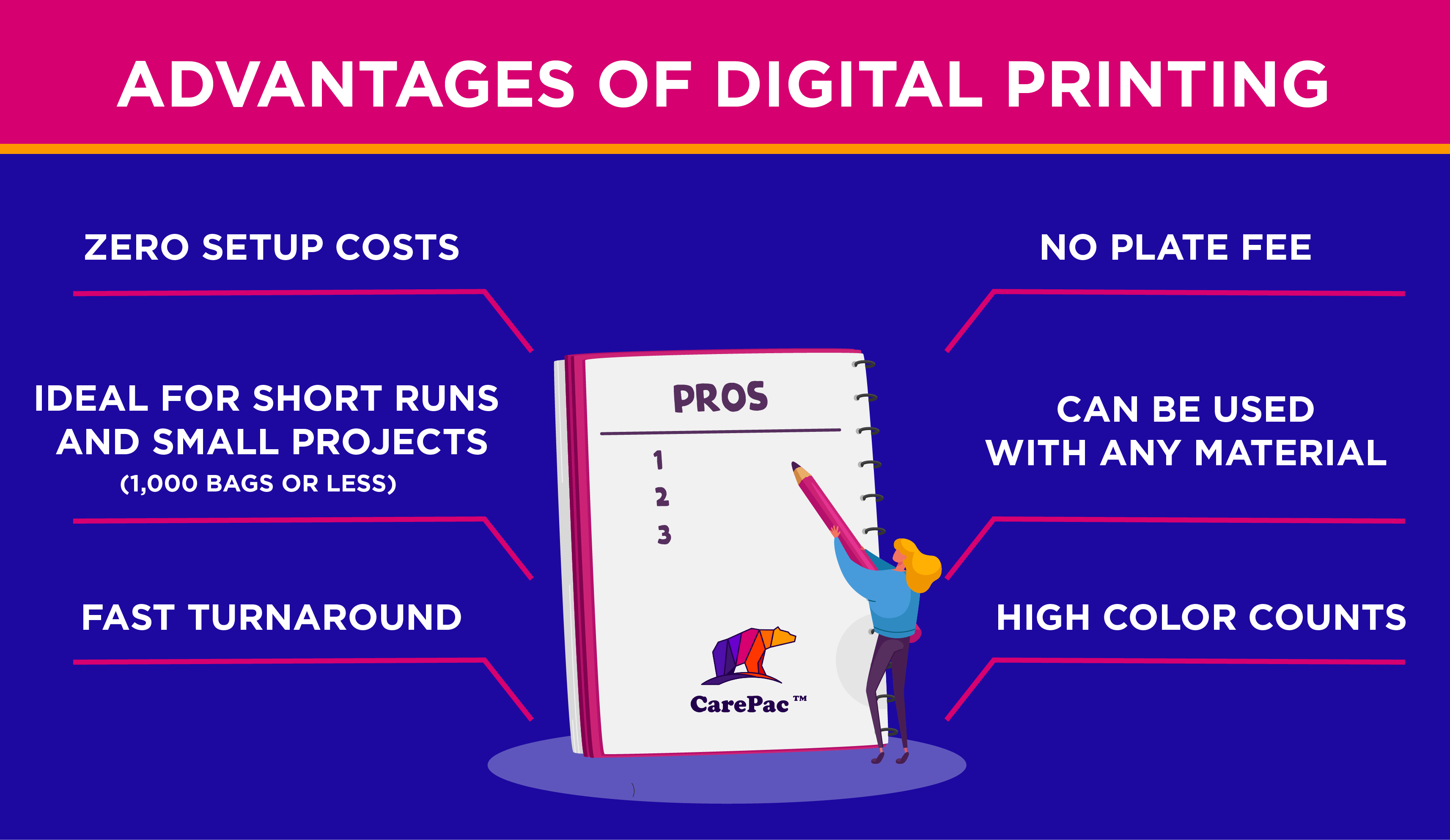Our Digital Printing Diaries
Table of ContentsWhat Does Digital Printing Mean?The Definitive Guide for Digital PrintingSome Known Details About Digital Printing Getting The Digital Printing To WorkDigital Printing Can Be Fun For AnyoneAll about Digital Printing
Variable information printing, such as direct mail with customized codes and addresses, is preferably matched for digital printing. Digital fast printing only needs 4 steps of layout, evaluation, printing and binding to obtain every little thing done. Digital quick printing has an unmatched benefit: print on demand.According to PMMI, electronic printing enables brand names and manufacturers to react rapidly to client needs while boosting the supply chain, decreasing warehousing price and waste, and enjoying faster time to market. That all sounds terrific, but how does this modern technology do all that? The major differentiator of these innovations is that there are no set-up costs and no plates with digital printing.
The Single Strategy To Use For Digital Printing
According to Wikipedia, the best difference in between electronic printing and standard approaches such as lithography, flexography, gravure, or letterpress - Digital Printing is that there is no demand to change printing plates in electronic printing, whereas in these analog printing techniques the plates are repetitively replaced. This results in quicker turn-around time and decreases cost when making use of electronic printing.
Digital printing is very versatile, so it's easy to make modifications to the package style rapidly. It all goes back to the plates.
A lot more supply can suggest even more waste in the future. With traditional printing approaches, short-run printing is simply not possible. Since a fantastic layout can make or damage your product, digital printing continually produces premium, clear and vibrant graphics each time. Digital printing on adaptable bags adds the brilliant, dynamic, and precise graphics that virtually beckon customers to connect and touch them.
Digital printing is the process of printing digital-based images straight onto a range of media substratums. There is no demand for a printing plate, unlike with countered printing. Digital data such as PDFs or desktop posting data can be sent straight to the digital printing press to print on paper, picture paper, canvas, material, synthetics, cardstock and other substratums.
Some Known Incorrect Statements About Digital Printing
According to PMMI, digital printing permits brand names and makers to respond swiftly to customer demands while boosting the supply chain, minimizing warehousing expense and waste, and delighting in faster time to market. That all noises terrific, but exactly how does this technology do all that? The major differentiator of these innovations is that there are no set up costs and no plates with electronic printing.
According to Wikipedia, the best distinction in between digital printing and traditional approaches such as lithography, flexography, gravure, or letterpress is that there is no need to change printing plates in electronic printing, whereas in these analog printing techniques home plates are continuously changed. This leads to quicker turn-around time and reduces expense when making use of digital printing.

Facts About Digital Printing Uncovered
With traditional printing approaches, short-run printing is just not feasible. Due to the fact that a terrific layout can make or break your product, digital printing continually creates premium, clear and browse this site vibrant graphics each time.

According to PMMI, digital printing allows brands and makers to respond rapidly to customer needs while improving the supply chain, decreasing warehousing expense and waste, and taking pleasure in faster time to market. That all sounds excellent, however just how does this technology do all that? The major differentiator of these modern technologies is that there are no set-up costs and no plates with electronic printing.
Digital Printing - Questions
According to Wikipedia, the best distinction between electronic printing and conventional techniques such as lithography, flexography, gravure, or letterpress is that there is no need to replace printing plates in electronic printing, whereas in these analog printing techniques the plates are repeatedly changed. This causes quicker turnaround time and lowers expense when utilizing electronic printing.
Speedy manufacturing implies obtaining your product to market faster. It also implies it's much easier and faster to make changes later, when you alter a dish, include a SKU, or create seasonal packaging. Digital printing is very adaptable, so it's very check my reference easy to make adjustments to the plan style quickly. All of it returns to home plates.

The Definitive Guide for Digital Printing
Digital printing is the process of printing digital-based images straight onto a range of media substrates. There is no requirement for a printing plate, unlike with balanced out printing. Digital documents such as PDFs or desktop publishing data can be sent directly to the electronic printing press to print on paper, picture paper, canvas, fabric, synthetics, cardstock and various other substrates.